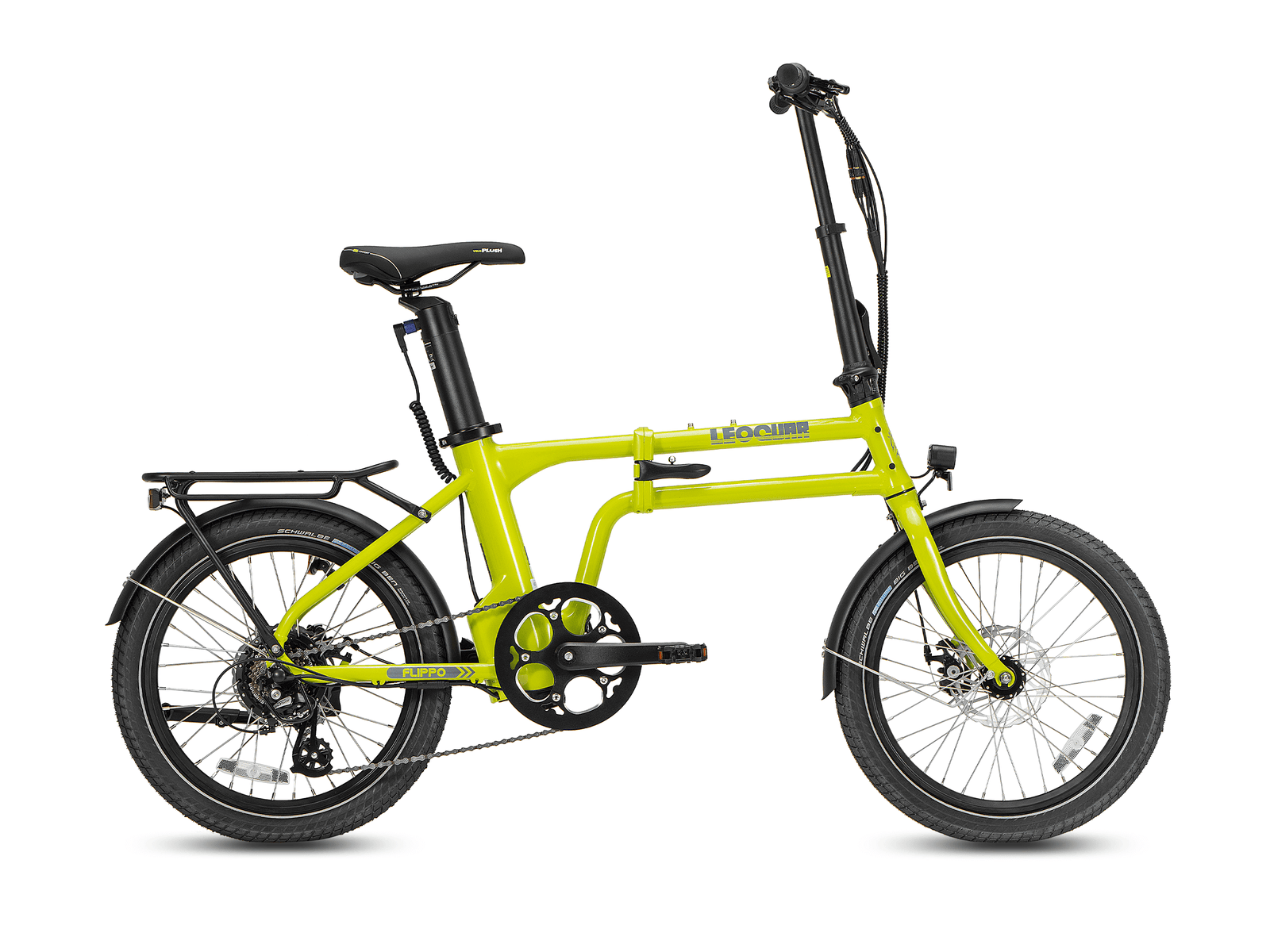
Are Electric Bikes Good? Worth the Investment in 2025
The Upfront Investment
Electric bikes are now mainstream transportation. The first big question for buyers is price. Electric bikes cost between $600 and $8,000. Understanding what you get at each price helps you decide.
Entry-Level ($600 - $1,500): These bikes have basic hub motors and smaller batteries. The parts work but aren't fancy. They're perfect for testing out e-biking or short rides to work.
Mid-Range ($1,500 - $3,500): Most people find the best value here. These bikes have better motors from brands like Bosch or Shimano that feel more natural. The batteries use high-quality cells from Samsung or LG and last longer. You also get better brakes and gears.
Premium ($3,500+): These are top-performance bikes for serious riders. They have the best motors, big batteries built into the frame, and lightweight materials. Everything is professional grade.
When you compare an e-bike's cost to other transportation, it makes sense. A good e-bike costs about the same as a high-end regular bike. It costs much less than even a cheap used car with all its surprise expenses.
| Vehicle Type | Typical Initial Cost | Key Considerations |
|---|---|---|
| Entry-Level E-Bike | $600 - $1,500 | Good for casual use, shorter distances. |
| Mid-Range E-Bike | $1,500 - $3,500 | Best value for commuting and regular use. |
| High-End Traditional Bike | $1,500 - $4,000 | Requires full physical effort; no assistance. |
| Used Car (Budget) | $5,000 - $10,000+ | Includes ongoing costs for fuel, insurance, tax. |
Long-Term Financials
The purchase price is just the start of the money picture. Long-term savings show where an e-bike really pays off, especially when you use it instead of driving. Electricity to charge an e-bike costs almost nothing. A full charge gives you 20 to 100 miles and costs 10 to 30 cents. Gas costs way more than that.

Taking care of an e-bike doesn't cost much either. You need to replace brake pads, care for the chain, and change tires just like a regular bike. The main e-bike cost is replacing the battery every 3-5 years, which costs $300 to $800. This seems like a lot, but it's much less than what you spend on a car each year.
When you replace a car with an e-bike, you save on gas, parking, insurance, registration, and repairs. Families with two cars can save thousands each year by replacing one with an e-bike. Even if you just stop using public transport, you save money on monthly passes. Learn more about e-bike maintenance costs to plan your budget effectively.
| Cost Category | Annual Car Estimate | Annual E-Bike Estimate | Potential Annual Savings |
|---|---|---|---|
| Fuel / Electricity | $1,500 | $50 | $1,450 |
| Insurance & Tax | $1,200 | $0 - $100 | $1,100+ |
| Parking / Tolls | $500 | $0 | $500 |
| Maintenance | $1,000 | $150 | $850 |
| Total | $4,200 | $300 | $3,900 |
A New Convenience
An electric bike changes what you can do on two wheels. It's not just a bike anymore. The motor help makes hills feel flat and fights against strong winds so you keep your speed without getting tired.
This means you arrive at work fresh without needing a shower. In busy cities, an e-bike often beats cars for short to medium trips because you can use bike lanes to skip traffic. Quick starts from red lights also make riding with cars feel safer.
E-bikes do more than just get you to work. The extra power makes carrying heavy stuff easy. A cargo e-bike can haul a week of groceries, business packages, or even kids in special seats. This turns your e-bike from a fun toy into a real car replacement for daily tasks.
E-bikes also help people who might not ride regular bikes. They help older people, those with joint pain, or anyone who isn't very fit yet. The motor lets you choose how hard to work, so you can keep up with friends or family without strain. Modern batteries go 20 to 100 miles, so running out of power isn't usually a problem.
Your Health Questions
Many people think e-bikes are cheating and don't give you real exercise. Science shows this isn't true. You work less per mile than on a regular bike, but you still get real health benefits.
Studies show that e-bike riders get their hearts pumping enough to count as moderate exercise, like fast walking. The key difference is that it feels easier, so it's more fun than feeling like work.
This fun factor changes how people behave: e-bike owners ride more often and go farther than people with regular bikes. They choose to bike instead of drive more often. This means they might get more total exercise each week than someone who only rides a regular bike on weekends.
Cycling is easy on your joints, which helps a lot. People with knee or hip pain, or those getting better from injuries, can stay active without the hard impact of running. Being outside and active also helps your mood and reduces stress. To dive deeper, you can explore the health benefits of e-biking and see the research for yourself.
The Green Equation
In our climate-conscious world, how we get around matters for the environment. Electric bikes are extremely eco-friendly. Their carbon footprint is tiny compared to cars.
Even electric cars, which are better than gas cars, need huge batteries that take lots of resources to make. An e-bike battery is hundreds of times smaller and needs far fewer resources.
Riding an e-bike creates almost no emissions. The only impact comes from the electricity used to charge it. Even when that electricity comes from coal or gas plants, the per-mile emissions are much less than any car.
Surprisingly, some studies show e-bikes can be even greener than regular bikes. This is because a big part of a regular bike's carbon footprint comes from the extra food the rider needs to eat for energy. The efficient electric motor reduces how many calories you need, which lowers the total environmental impact.
The battery disposal is a concern. Good recycling programs are important for handling old lithium batteries properly. But by replacing car trips, e-bikes directly cut air pollution, noise, and traffic, making cities better places to live.

Potential Drawbacks
Despite all the benefits, electric bikes do have some problems. A fair review must mention these downsides.
Weight: E-bikes are much heavier than regular bikes, usually 40 to 70 pounds. This makes them hard to carry upstairs to an apartment, put on a bus rack, or mount on some car racks.
Maintenance Complexity: Basic care is simple, but motor and battery problems need special knowledge. Not all bike shops can or will fix the electronic parts of every brand, which can make finding a good mechanic tough.
Theft Risk: Their high value makes e-bikes attractive to thieves. You need good locks (maybe two) and a safe place to store your bike. E-bike insurance is also smart to consider.
Regulations: Laws about e-bikes can be confusing and different in each city, state, and country. Bikes are often put into classes (Class 1, 2, or 3) based on their top speed and whether they have a throttle. These classes decide where you can legally ride, especially on shared paths or mountain bike trails. Always check your local rules.
The Final Verdict
So, are electric bikes good? Yes, they are amazing technology. They're fun, efficient, and can improve your health and your city's environment.
The more important question—are they worth it for you—needs a personal answer. If you want to make your commute more fun, replace expensive car trips, carry cargo, or get more exercise without the strain of a regular bike, an e-bike is a great investment. The starting cost pays for itself quickly through long-term savings and lifestyle benefits.
The best way to know for sure is to try one yourself. We strongly suggest visiting a local bike shop and taking a test ride. Feel the smooth power as you climb a hill, and you might find your answer right there.
Frequently Asked Questions
Are electric bikes good for exercise?
Yes, e-bikes provide real exercise. Studies show riders get their heart rates up enough to count as moderate exercise, similar to brisk walking. While you work less per mile than on a regular bike, e-bike owners tend to ride more often and farther, often getting more total weekly exercise.
How much do electric bikes cost to maintain?
Basic maintenance costs are similar to regular bikes - brake pads, chain care, and tire changes. The main e-bike specific cost is battery replacement every 3-5 years, costing $300-$800. Overall annual maintenance typically runs around $150, much less than car maintenance.
Are electric bicycles worth it for commuting?
E-bikes excel for commuting. The motor assistance flattens hills and fights headwinds, so you arrive fresh without needing a shower. In cities, they're often faster than cars for short to medium distances because you can use bike lanes to bypass traffic.
How far can electric bikes go on one charge?
Range varies from 20 to over 100 miles depending on the bike, terrain, and assistance level used. Most mid-range e-bikes provide 40-60 miles of range, which covers most daily needs. Charging costs only 10-30 cents per full charge.
Do I need special insurance for an electric bike?
Regular homeowner's or renter's insurance may cover e-bike theft, but specialized e-bike insurance is recommended due to their higher value. This is especially important since e-bikes are attractive targets for thieves. Always use quality locks and secure storage.









































Leave a comment